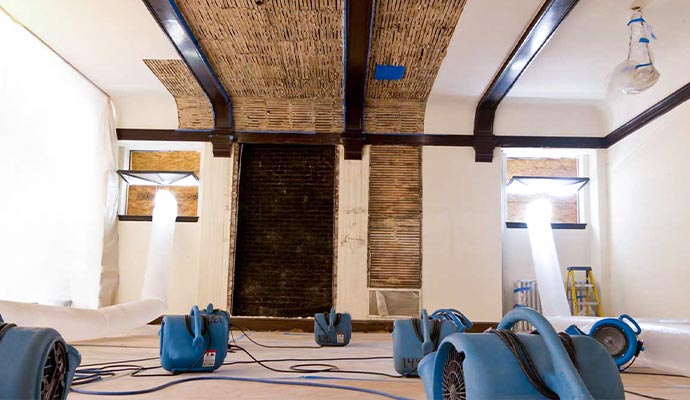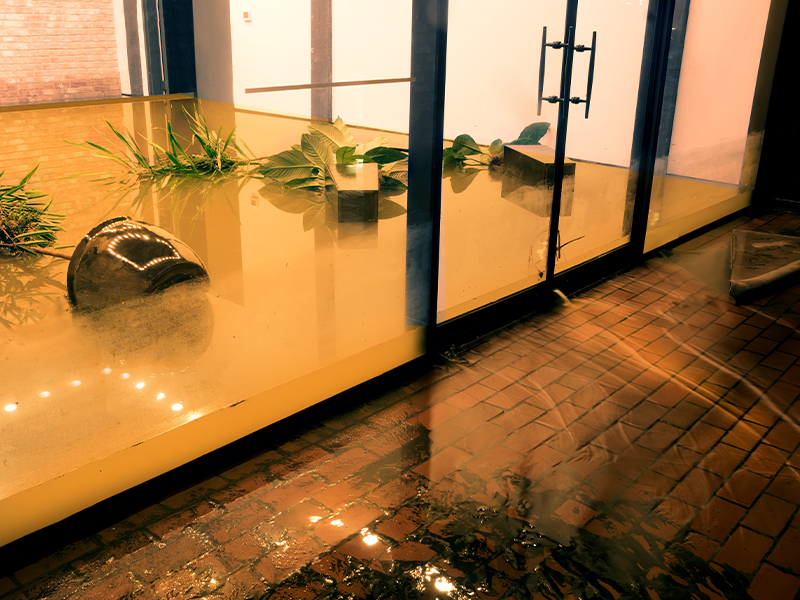Expert Water Damage Restoration Philadelphia: Rapid Feedback, Lasting Outcomes
Emergency Water Damages Reconstruction: Swift Action to Lessen More Damages
What precisely does emergency water damage reconstruction require? By recognizing the urgency and thorough nature of this process, you will gain beneficial understandings right into exactly how professionals tackle emergency water damages, making sure a swift and reliable action.
Significance of Swift Response
Swift reaction is of utmost importance in water damages repair to decrease further damage and mitigate potential threats. When water damages takes place, whether due to a burst pipe, an all-natural disaster, or any kind of other unforeseen event, time is of the significance. The longer water rests in a structure, the even more damage it can cause. This is why it is crucial to act quickly and successfully to eliminate the water and begin the remediation procedure.
One of the major factors speedy feedback is essential in water damage restoration is to avoid the growth of mold and mildew and mold. Mold can start to expand within 24 to 48 hours of water exposure, and once it takes hold, it can spread out swiftly throughout the affected location. Mold not only triggers additional damage to the framework of the building yet likewise poses health risks to passengers. By reacting quickly, experts can thoroughly dry out the area and prevent the growth of mold, reducing the demand for substantial removal and ensuring the safety of those included.
Additionally, a timely response can help salvage and recover valuable items and belongings - home inspector philadelphia. Water damage can be ruining, particularly when it influences individual things of financial or sentimental value. Acting quickly enables experts to evaluate the damage and execute ideal remediation strategies to recover as high as feasible. This not only aids to decrease monetary losses yet likewise brings comfort to those impacted.
Analyzing the Extent of Damages

Throughout the evaluation, remediation professionals extensively check out the affected location to identify noticeable indications of damages, such as water stains, deformed products, and mold growth. They also make use of specialized equipment to discover surprise damage, such as wetness meters and thermal imaging video cameras. This detailed evaluation enables them to accurately establish the extent of the damage and develop a tailored reconstruction strategy.
Since it aids professionals prioritize their initiatives,Analyzing the degree of water damage is crucial. They can identify areas that call for immediate focus, such as standing water elimination and drying out, to prevent more damage and decrease the risk of mold and mildew growth. They can additionally figure out the areas that need repair work or replacement, guaranteeing that no damages goes neglected or undetected.

Water Removal and Drying Process
The water extraction and drying out procedure is an essential action in water damage restoration, as it includes the elimination of excess water and the thorough drying out of the damaged area to prevent additional damage and mitigate the official statement threat of mold growth. After analyzing the level of the water damage, the following step is to extract the water from the afflicted location.
This step is crucial in preventing second damages, such as architectural damage and the growth of mold and mildew. The drying out process might take a number of days, depending on the degree of the water damage and the products included.
It is necessary to guarantee that the afflicted area is totally dry before waging any type of repair services or repair. Failure to completely dry the location can result in long-lasting problems, including weakened frameworks, moldy odors, and the growth of mold and mold. Therefore, expert water damages remediation companies use wetness detection tools to make sure that the afflicted area is completely dry prior to continuing to the next step.
Mold And Mildew Prevention and Removal
Reliable mold prevention and removal are crucial in water damage reconstruction to guarantee the security and stability of the damaged location. water damage restoration philadelphia. When water damages occurs, whether from a ruptured pipeline, flooding, or a leaking roofing system, it develops an ideal environment for mold development. Mold can begin to create within 24 to two days after water damage, and if left without treatment, it can spread out swiftly and create severe health and wellness risks
To protect against mold development, it is essential to attend to water damages immediately. The initial step is to repair the source and identify of the water intrusion.
In cases where mold growth has currently happened, removal is needed to get rid of the mold and prevent its return. This involves the careful removal and disposal of damaged materials, such as drywall or carpeting, to guarantee that all traces of mold are removed. It is necessary to keep in mind that mold and mildew remediation must be performed by specialists that have the necessary training and tools to securely get rid of and take care of mold and mildew.
Bring Back the Affected Location

First of all, it is important to completely dry the area to stop any type of further damage and to prevent the development of mold and mildew. This might include making use of specialized drying out devices, such as dehumidifiers and industrial-grade fans, to get rid of all dampness from the damaged surface areas.
As soon as the location is completely dry, the remediation process can start. This might involve fixing or replacing harmed architectural elements, such as drywall, ceiling, or flooring tiles. It is essential to deal with any underlying concerns that may have created the water damages, such as leaky pipelines or faulty plumbing, to avoid future events.
Additionally, bring back the afflicted location might likewise include painting walls, replacing damaged fixtures, and extensively cleaning and sterilizing the space. This guarantees that not only is the area structurally sound, yet it is likewise cosmetically pleasing and safe for tenancy.
Conclusion
Examining the level of damages permits for effective water extraction and drying out procedures to be applied. Generally, prompt action and complete reconstruction procedures are key to mitigating the unfavorable effects of water damage.
Swift reaction is of utmost relevance in water damage restoration to decrease additional damage and minimize possible threats.During the evaluation, restoration specialists extensively take a look at the damaged location to recognize visible indications of damages, such as water discolorations, deformed products, and click this site mold development.The water extraction and drying procedure is a crucial action in water damages reconstruction, as it includes the removal of excess water and the extensive drying of the affected location to avoid more damage and mitigate the risk of mold and mildew growth. After assessing the degree of the water damages, the following action is to remove the water from the affected location.Effective mold and mildew avoidance and remediation are essential in water damage reconstruction to ensure the safety and stability of the afflicted area.